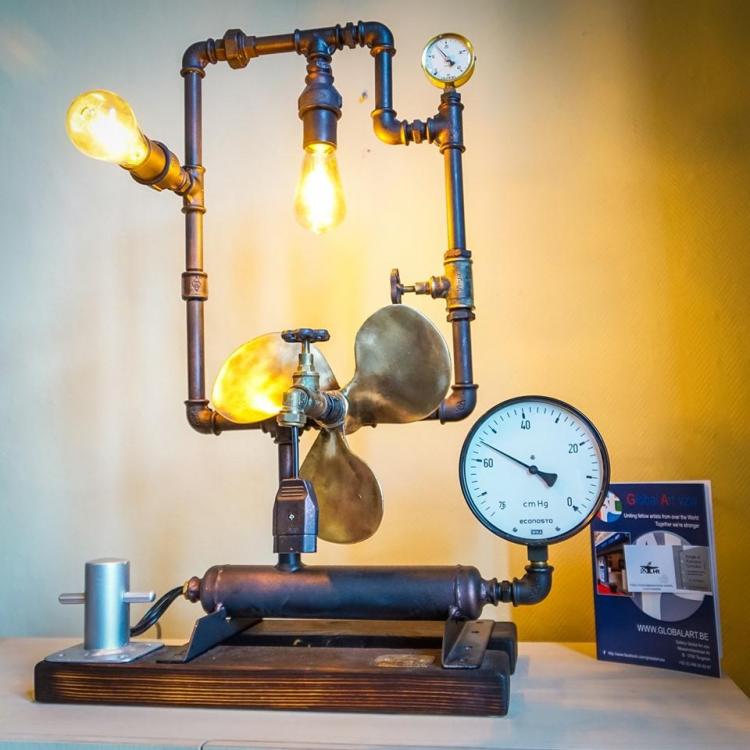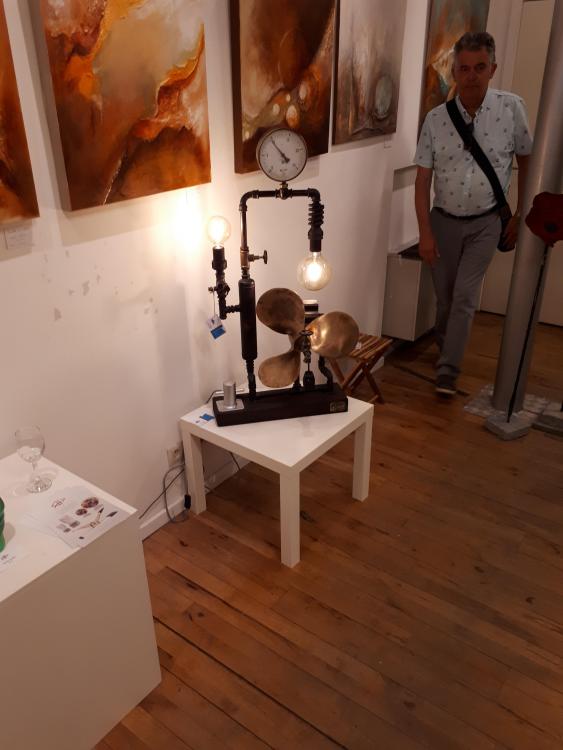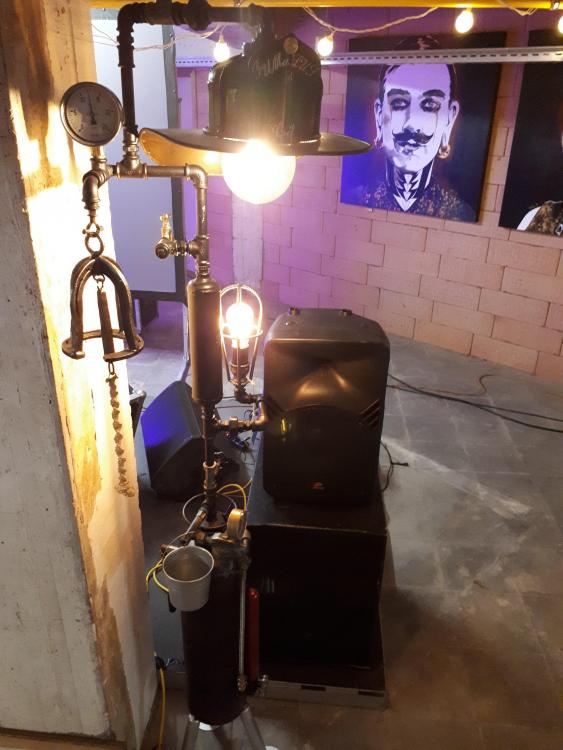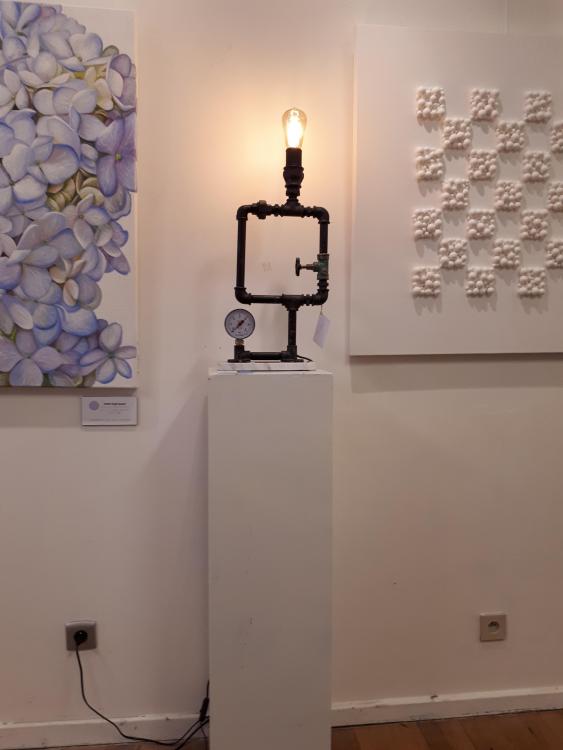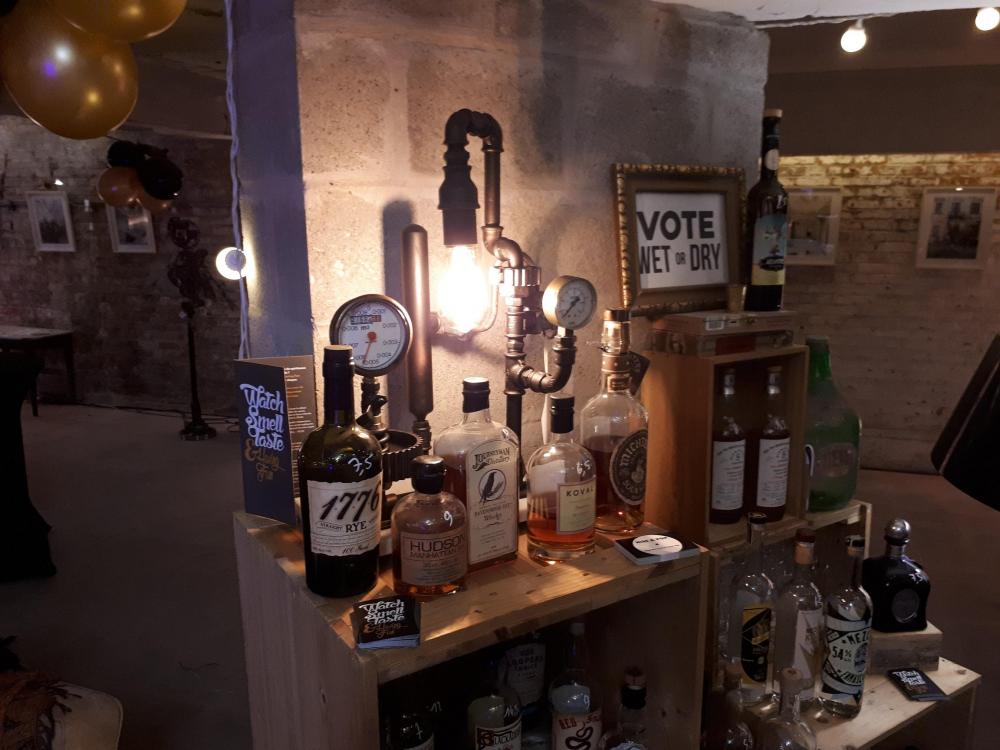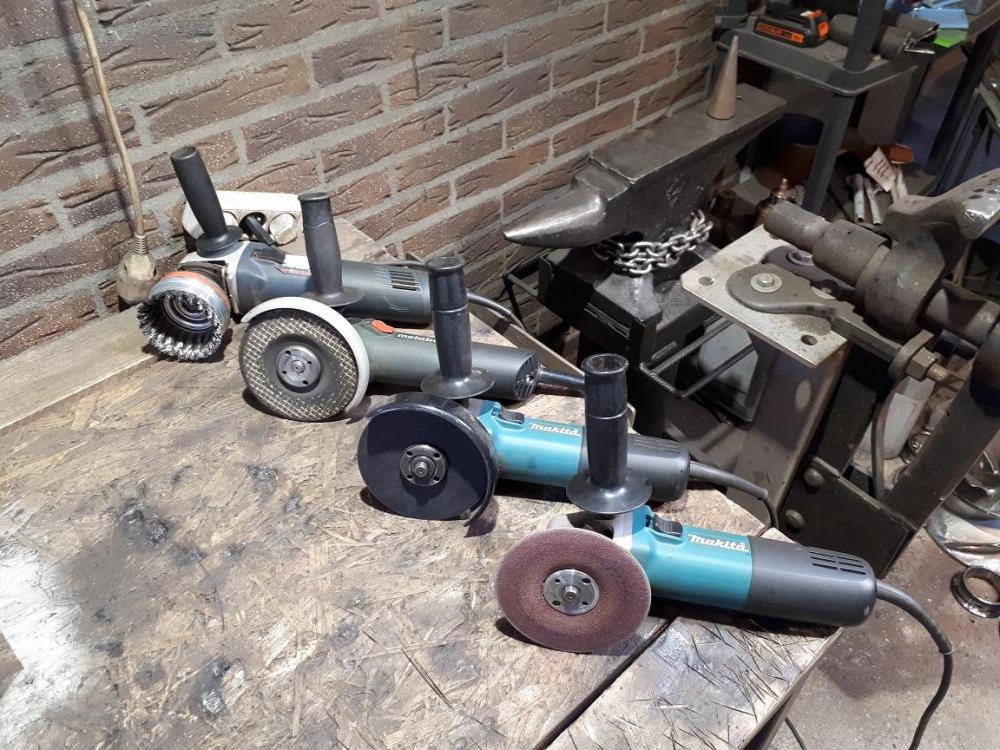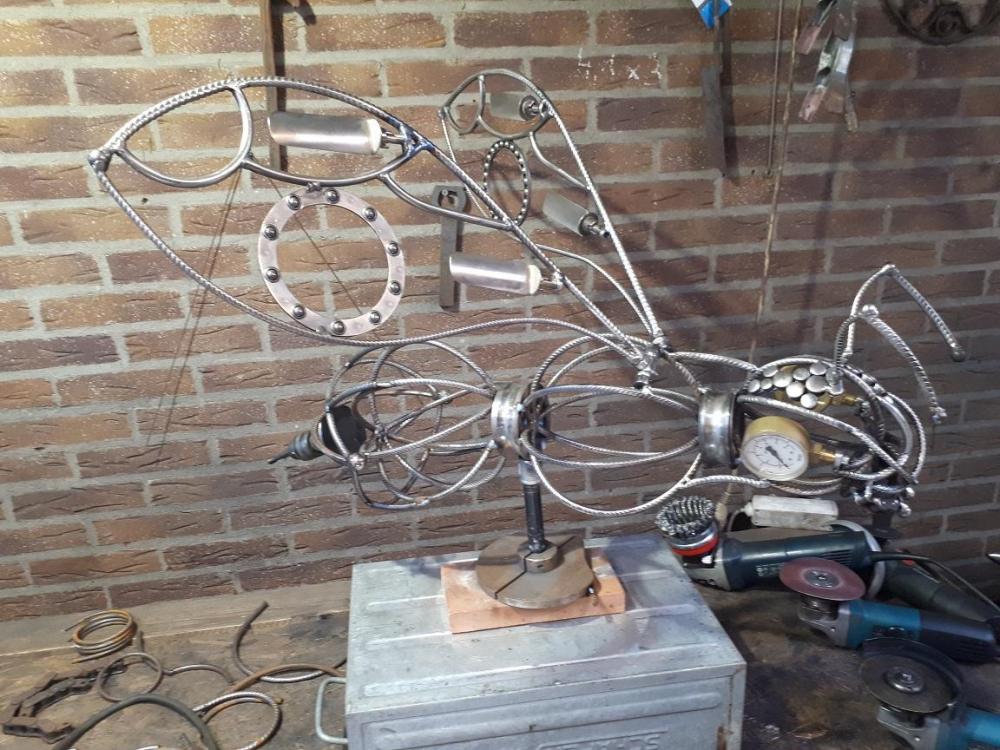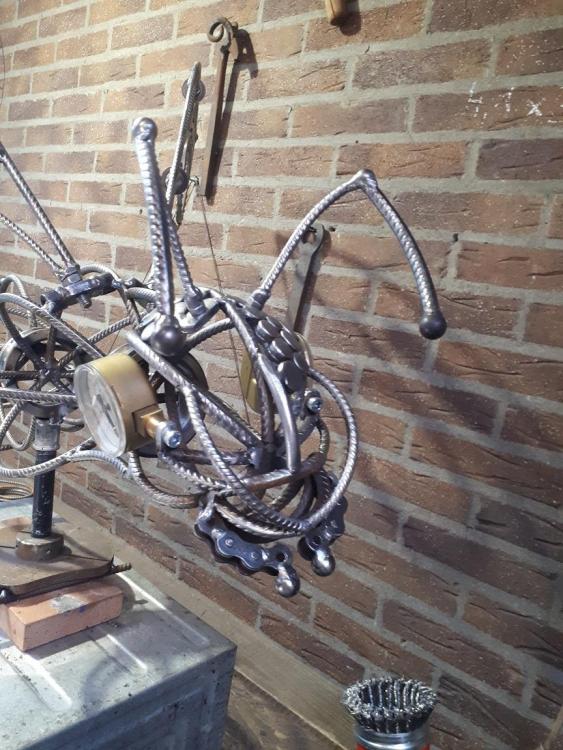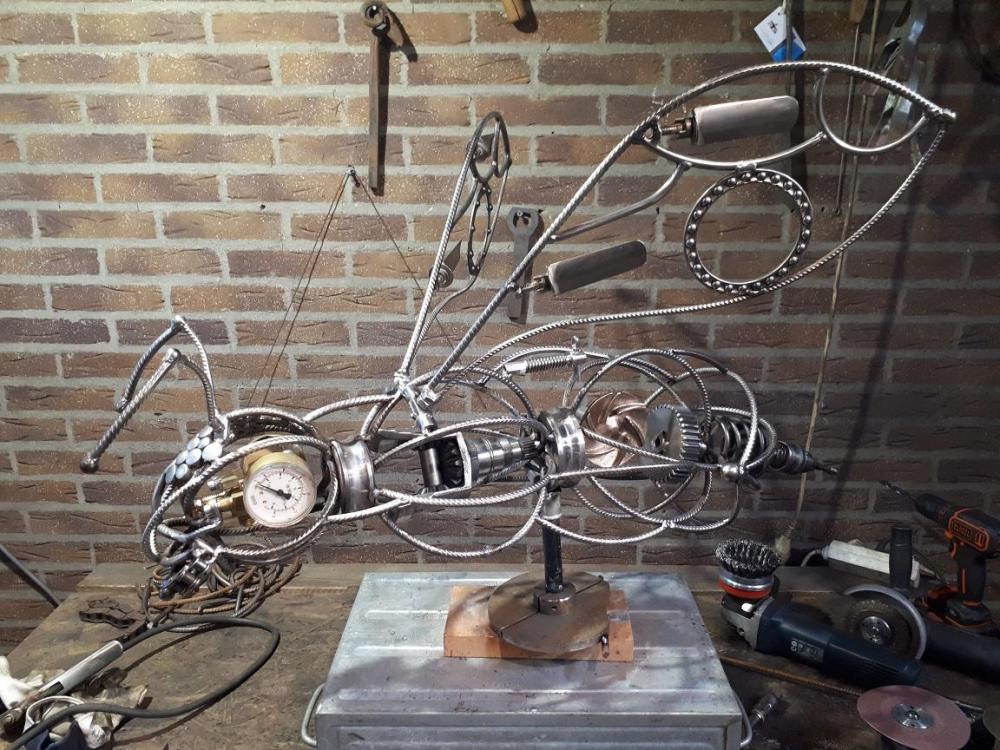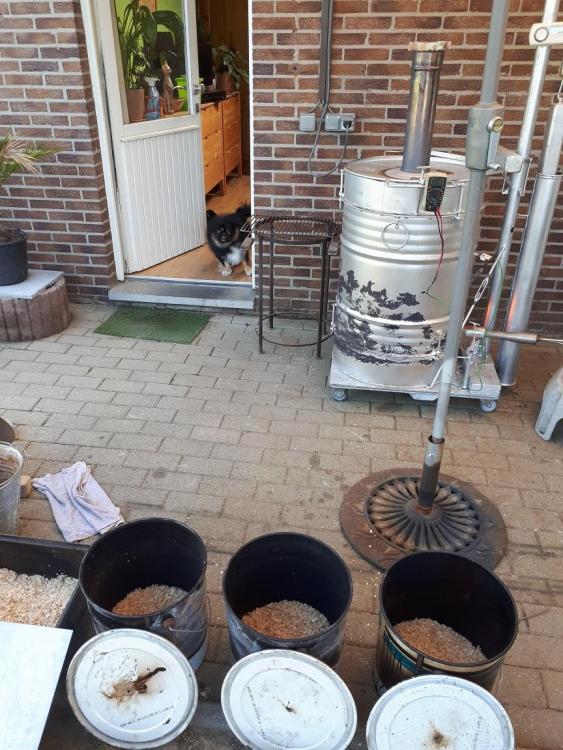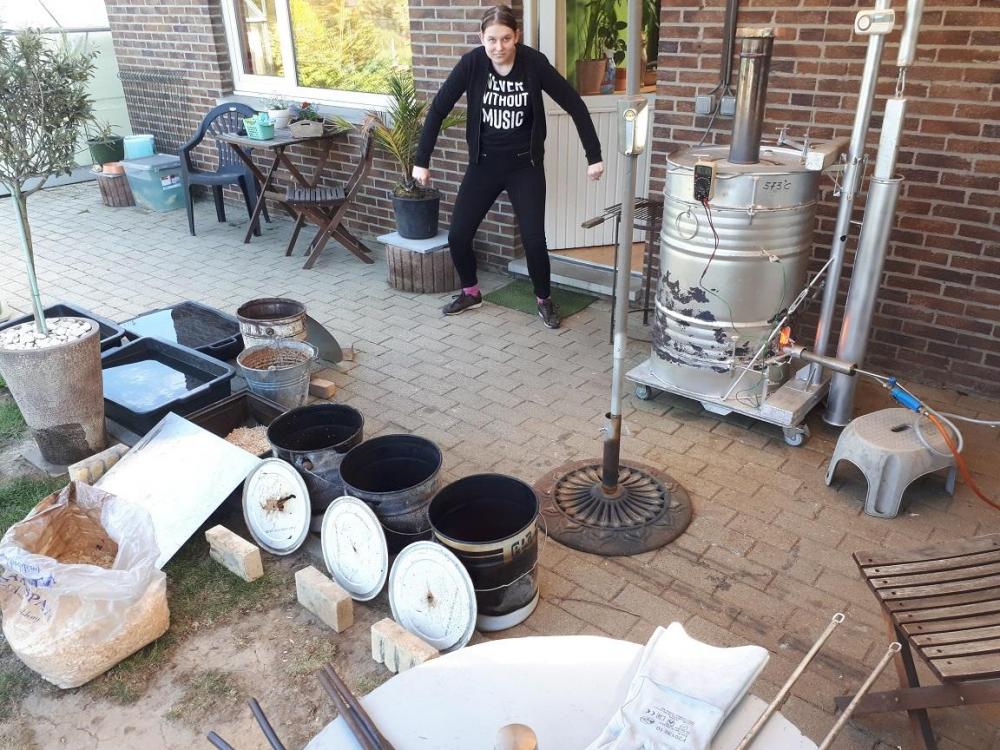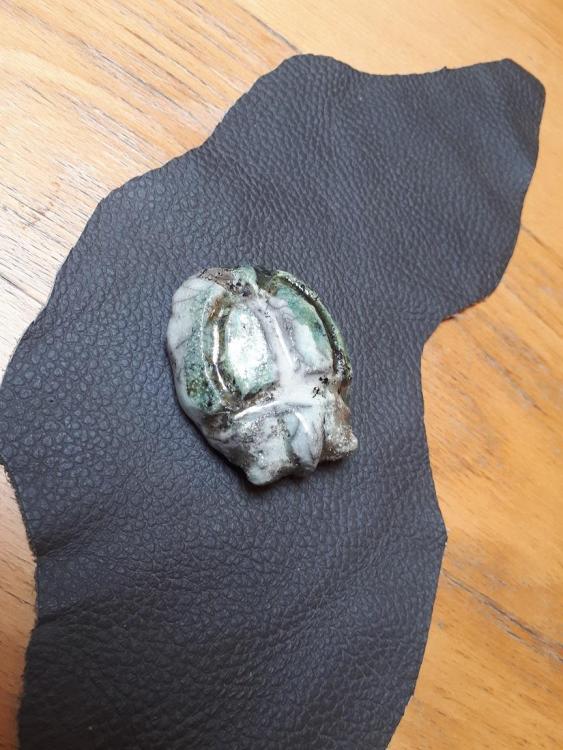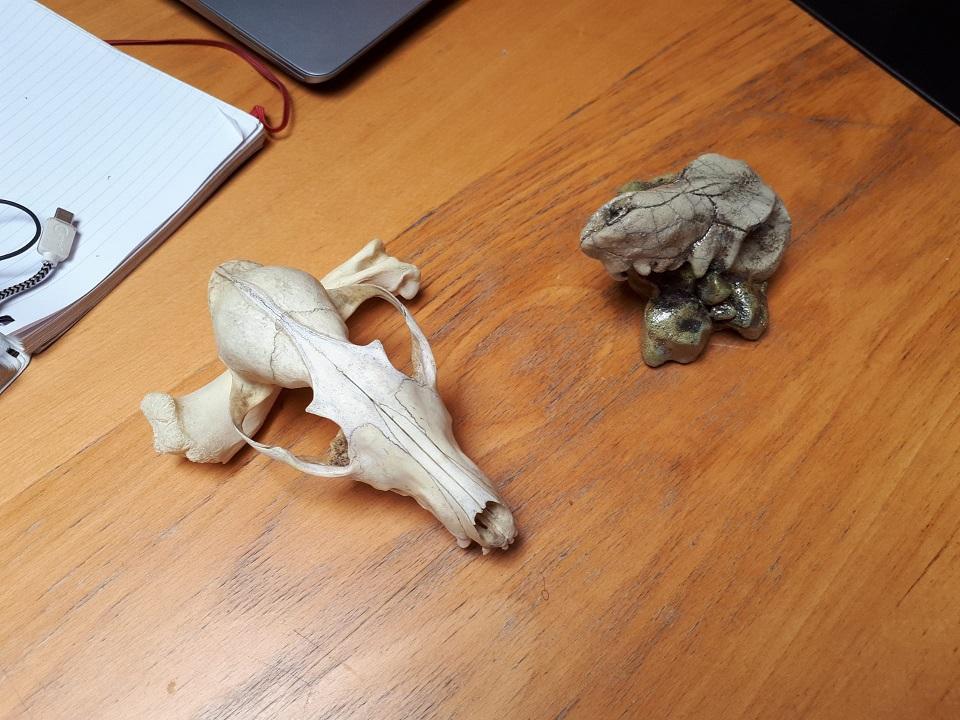-
Posts
493 -
Joined
-
Last visited
Content Type
Profiles
Forums
Articles
Gallery
Downloads
Events
Everything posted by Hans Richter
-
Throughout 2019, the Forge & Furnace Tummulus workshop also created a Steampunk lamp collection of up to 9 individual lamps with a theme (Steam boat, Boiler house, Fire fighter) and made from various upcycled iron scrap and "aged" brass parts. Some of these lamps now serve as additional (mood) lighting in the mencave 'aka' home office or the author's living room. Other lamps are and could regularly be seen as eye catchers at exhibitions and events in 2019 & 2020. However, some lamps are still available to "complete" the interior of a newly furnished loft or modern shop. Hope I find some interested persons for them too
-
Bertram ready, Bertram and his pedestal ready to ;-)
-
Hello Jaap, welcome to IFI, please let us know where in the world you come from and complete your user profile. There is also a 'Read this first' post that will familiarize you with the possibilities of IFI and the rules of conduct that apply within this forum. As for the age of your anvil, assume it was produced sometime between 1926 and 1978. I myself will contact by LinkedIn at the factory in Turnhout if there are any notes with regard to the serial numbers of the anvils and the corresponding years of construction. However, less relevant to me because I don't care whether my anvil was cast in 1926 or 1978 and fitted with a hardened faceplate. I am now a proud owner of three UATs, one of 150 kg, one of 125 kg and one of 70 kg. The 70kg anvil regularly goes to my events and demos now together with the 60kg Columbian. Be blessed with the butt block present on the anvil, this is in many cases not self-evident and you will have a lot of fun while upsetting workpieces and compacting the material. The joint and face plate look good, as does the brake drum next to it and which will probably serve as a field forge in the future. Only the carpenter's hammer does not fit completely in the picture, which is a tool for wimps but not suitable for forging. Have the suspicion that you are somewhere in Belgium or the Netherlands, so if you have any questions, you are always welcome to PM and come by.
-
Dear Kniven, a nice box forge, given its size well heated with two professional burners, maybe a little overkill. Apart from the hose connections whose density you can check with soapy water, the rubber hoses are very close to the burners and the creeping heat after the burners have been turned off can still affect them. The burners are also aimed directly at the workpiece and you will soon have to deal with a load of mill scale caused by the oxygen that the burners drag through the venturi. My reason for choosing a vortex operation of the burner(s) in the forge chamber. Also look at the dragon's breath and the loss of a lot of energy as the forge is still open on both sides. finally, the 9kg gas cylinder will freeze with two burners and the flow rates called off. All in all lessons that I have been confronted with in recent years and that I have tackled piece by piece. I also agree with the advice of my colleagues regarding pressure and distribution of the gas supply. Either way you will get a nice glowing blank from the forge that is easy to forge. The rest is 'progressive insight' and a learning process. Cheers, Hans
-
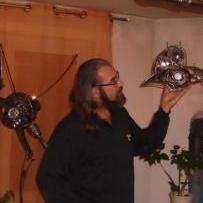
Looks like I have some catching up to do
Hans Richter replied to BIGGUNDOCTOR's topic in Everything Else
BGD, nice to read something from you again. Happy that everything is fine. CU, Hans -
TJ, a nice tool from a good brand. I wish you much worn out grinding disc's and cart loads of corund / steel grinding dust in your shop. Especially, however, good luck and care in maintaining all limbs and many neatly finished forgings and workpieces. When I am asked if I play an instrument I always call yes, the angle grinder. I have multiple AGs, as I work with different discs when finishing my sculptures and would lose a lot of time if I have to constantly change them. What is the power of your grinder (in Watt) not unimportant for the life time and endurance of the tool.
-

Melting points of Metals and Alloys
Hans Richter replied to Glenn's topic in Smelting, Melting, Foundry, and Casting
In fact very nice charts to give everyone an indication when certain alloys start to melt. however, note that these are the temperatures when the specified metals change from a solid state to the liquid state. However, this is not the temperature when a material is pourable well distributed in a mold. This must be determined experimentally by means of the necessary 'super' heat. In many cases this is a few degrees higher than what is indicated on the charts. For aluminum and bronze this is very easy to determine because the material starts to cavitate in the crucible, with pure copper and silver slightly more difficult, these materials must also be kept hot during casting (additional burner on the crucible during casting). Also very important to prevent oxidation of lower alloy elements due to their lower melting point such as tin (for bronze) and zinc (for brass). I am going to add an extra bit of alloy elements that have been oxidized from the molten bath until this time, feeling for casting (super heat). This is done under a thick layer of Flux (Borax) to prevent these from evaporating. Finally, don't forget to degas your melting pool to avoid unsightly blisters and inclusions. In my case I do this with crushed charcoal which is stirred under at the last minute. -
Thomas, this time I have to be careful to go with your suggestion. As a result of what I can remember they taught us in high school that Drones (like myself) are very lazy and limit themselves to defending the hive. So they do not look for pollen and therefore do not have a backpack on their hind legs to take cart loads of pollen to the bee stock. And yes, at the beginning I had thought to integrate receptacles on their legs for this kind of purpose. Regardless, these days are all about being politically correct .
-
Some of my friends are beekeepers, after seeing my other insects (ants, mosquito, dragonfly) I was asked to make a Steampunk 'F&F Tumulus Bee' as well. Here a first start. The pedestal will become a mechanical flower this time. Too bad I don't have punch caps anymore to finish the animal's skin. Everyone talks about or has a 'Drone' these days, some of my good friends fly with it regularly, soon I will have one too. .
-
A little bit of extra information when identifying reinforcing steel. If you look closely at your reinforcing steel bar, you will find the so-called (mill) rolling mark of the rolling mill on every so many lengths of the uniform ribs. This can be extra thick ribs, but also raised points or connecting bars between ribs. Each roller brand is unique and represents a specific type of rebar and manufacturer. The material that Joey is working on is called reinforcing steel 500B and is recognizable by its sharply rolled ribs and the longitudinal back lanes. For the (good) material (500B) certified in Europe, take a look at the enclosed PDF with product information (in Dutch). 2019-11-08-betonstaalboekje.pdf
-
Thomas, I often agree with Frosty and share his opinion. You both certainly have several decades more experience of life years and events that you have experienced unlike me and some others. As for the beard, my profile photo is no longer correct, because of the frequent wearing of a mask, I shaved off my beard. The ladies at home are happy, but can no longer piggyback on the Hipster / artist / blacksmith golf with my baby face. Chris is right, the worst time during a beard's growth period is when the beard hairs start to curl and stick into your skin. That itching terrible. As for rebar, I regularly use it for my sculptures, I often weld and forge them and the ribbed surface is often part of the artistic appearance. I will not want to miss reinforcing steel for simple and quick to make simple tools and accessories. Below is a photo of a set of quick-made tongs to take my filigree Raku Ceramics out of the glowing kiln for reduction in the wood chip barrels. Even the structure of the kiln is reinforced with rebar rings and parts of the gallows and burner attachment consist of the same material.
-
Hi Joey, I have to agree with Mr. Powers again (should not become a habit) an average 3.1 certificate issued by an independent testing laboratory on a hot-rolled and Tempcore-treated badge as shown in the chemical composition, Pb (lead) is not even stated because there are no significant quantities / percentages are present. However, you will find the TP values mentioned and hopefully low values of the culprits in reinforcing steel such as phosphor, sulfur and nitrogen because these make the steel less weldable causing cracks (P + S + Cu) or aging (N) in the intercristal sceleton, and of course a lot of manganese as already mentioned. So the lead storry is a fairy tale. I was 6 years manager in a metalware factory (Utrecht) that produced millions of drop forged rebar couplers for the building/construction industry and did 3 years of technical checks on reinforcing steel under the quality mark that was imported in the Netherlands, Germany and Belgium. No worry at all!!! certifcaat_met_uitleg_(002).pdf
-
Thomas, is right there are many different types of rebar. Starting from the simple small diameter that are made of low quality (tensile strength, and yield strength = 300MPa) which are cold-set by rolling and have a pressure-stronger metal-grating structure (action = reaction). Then there is the material processed by Joey (started from a diameter of 1/2 in) that is made through the tempcore process, which by definition have a much different chemical composition and a much higher yield strength and tensile strength (500 MPa YS). Orginal is made of reinforcing steel with a hard surface (adherence concrete) and a Martensite 'skin' that extends inwardly from cementite over austenite to ferrit in the core (hence Tempcore), this is achieved by quick quenching the surface and lengthening normalizing the rod with the residual heat in the core. The aim of this treatment is a gradual transition from heart to soft (ductile), since the reinforcing steel must be hard on the outside but also elastic on the inside. However, the moment the rod is heated to above 723 ° C, this structure is lifted from hard to soft, you get an ordinary mild steel with a high concentration of manganese. Probably the reason for the permanent flexibility of the steel and dents in Joey's hammer. And no, I'm not going to start with aluminum micro-alloy rebar and avoidance of free nitrogen for rebar in buildings in earthquake-affected regions .
-

Rectangular holes in my anvil?
Hans Richter replied to tom_ET's topic in Anvils, Swage Blocks, and Mandrels
Very nice to see - your hardy hole is 1 1/4 inches long and 3/4 inches wide. Normally you do indeed have 1 1/4 hardy tools or 3/4 tools for the smaller anvils. I recommend purchasing 3/4 inch hardies or making your own and filling the rest of the hole with a blind piece resting on the entire anvil face. In the photo you see some hardies that I made afterwards for my two mobile labels of 70 and 60 kilo anvils with a 3/4 hardy hole. -

What did you do in the shop today?
Hans Richter replied to Mark Ling's topic in Blacksmithing, General Discussion
Hi Dan, unfortunately only the listed languages. Am able to order a beer in Liége but now too old to pick up yet another foreign language. Fortunately, my beloved daughter understands enough French to act as an interpreter and support her dad, she is a few too modest to speak it every day. Meanwhile already had a lot of exhibitions in Wallonia, but then it is usually communicated in English that fortunately a lot of young Walloons speak. But how are you, unfortunately not heard from you for a long time. You all stay healthy, and always happy to see your 'crafty' comments passing by. Cheers, Hans -
Welcome Thomas, there is a threat 'Read this first' here on IFI. if the other members in the states wake up they will guide you there (accomplishing your profile). And also the gals en guy's like pictures. However welcome to the craft, if you have question search by (IFI + Google) or ask. Where you original from. Cheers, Hans
-
This is also one of my criteria, the following is that the item must fit through a regular living room door, followed by a height of up to 7.5 ft as it must also fit in the living room. The latter is the weight and my loose parts of all works and equipment are not heavier than 150lbs so that I can lift it myself for a short time. This way I can handle everything myself and I rarely have to rely on external help or aids
-

What did you do in the shop today?
Hans Richter replied to Mark Ling's topic in Blacksmithing, General Discussion
Hi George, actually German is my native tong But I also speak Dutch (and rudimental English ) didn't mention de German word for scarab -

What did you do in the shop today?
Hans Richter replied to Mark Ling's topic in Blacksmithing, General Discussion
Les l - a very nice work and finishing -

What did you do in the shop today?
Hans Richter replied to Mark Ling's topic in Blacksmithing, General Discussion
Hi George, please see, the Wiki-explanation indeed a little translation c.q. typo-mistake https://en.wikipedia.org/wiki/Scarab_(artifact) -

What did you do in the shop today?
Hans Richter replied to Mark Ling's topic in Blacksmithing, General Discussion
Hi Thomas, that is indeed what I already do with my bronze heel axes and now with the scarebees. This and also the dragonfly etc. are mystical subjects that bring me closer to my spiritual self. Have the silent hope that this humble respect at the root of our blacksmith life and society will preserve myself and my family for any adversity. -

What did you do in the shop today?
Hans Richter replied to Mark Ling's topic in Blacksmithing, General Discussion
Nothing to do with blacksmithing this time, but there is still a lot of heat involved. Last Saturday I finally fiered a load of clay that my girls have molded in the last two months under lock-down conditions from various types of Raku clay, which have now dried well and are ready for the biscuit fire. That is what we did at 1750 ℉ last Saturday (8h with conventional burner). On Sunday the ladies provided the whole with Raku glaze and the whole gang was burned again at 1950 ℉ (3h with the F&F forced air burner). The result is impressive (at least for the girls) and we only had to miss a sculpture because the glaze had melted into the surface. The ladies have now enriched our interior with numerous accessories and I again have a pool of promotional gifts for sponsors of F&F Tumulus. I am also happy with the classic Raku-Krakelee, which is typical for this old method of Jappanese firing, where a very special surface is created by reducing oxygen and breaking up the glaze and penetrating the black smoke. The use of some oxidizing glazes enhances the effect of the works to, but it is always a matter of waiting to see what the result is to reduce and deter. Cheers, Hans -

What did you do in the shop today?
Hans Richter replied to Mark Ling's topic in Blacksmithing, General Discussion
Great pice of work, self made handle? -
If you wish a lot of strength, losing a beloved pet is very bad.
-
Aus -be welcome to share what you want -please send me your FB adres/data to have a look as well, Cheers, Hans

